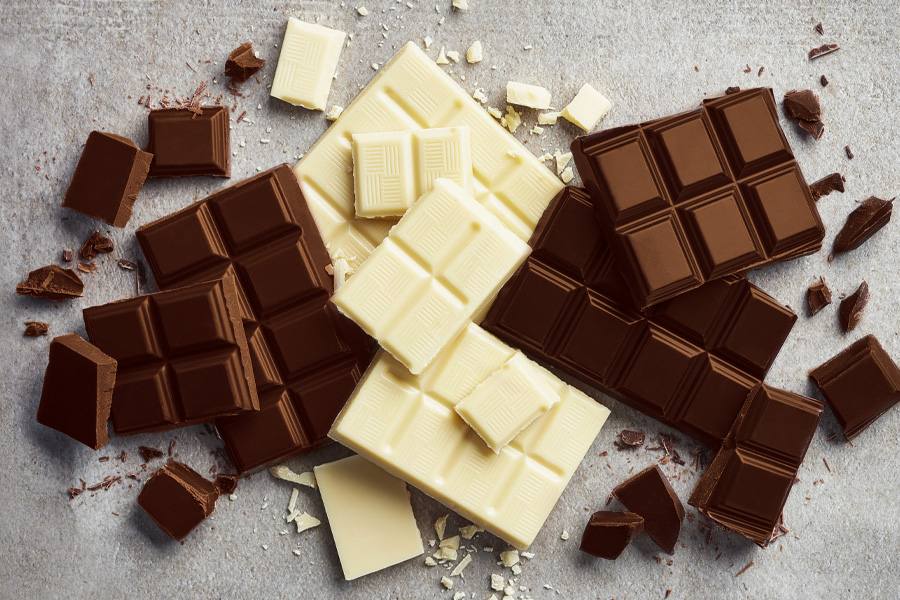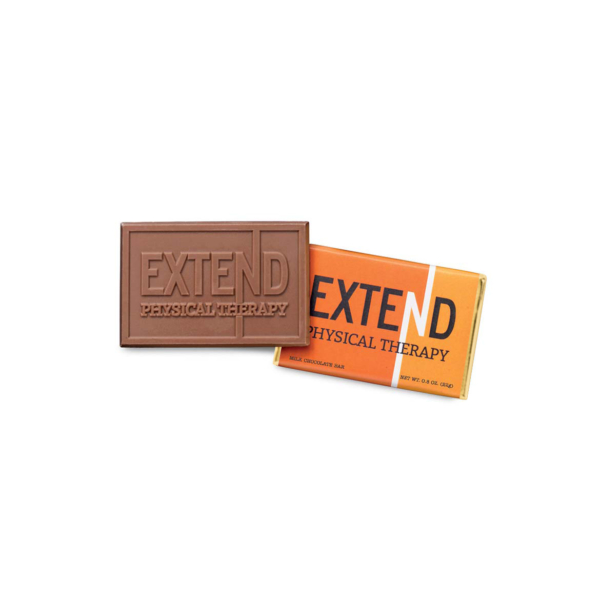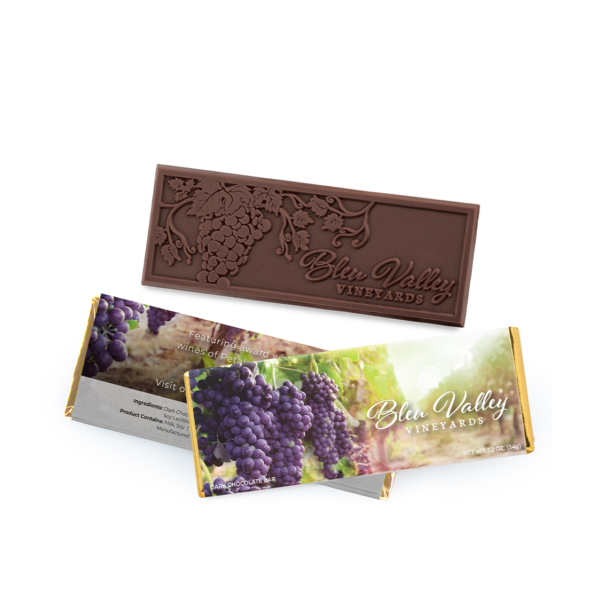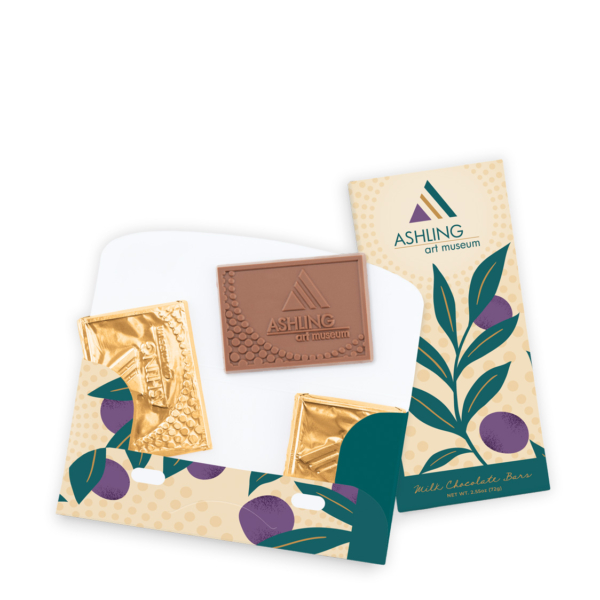Chocolate lovers know there’s nothing quite like the sweet, satisfying taste of a good chocolate treat. But with so many varieties: milk, dark, white, and countless creative combinations, have you ever wondered what truly sets white chocolate apart from milk chocolate?
Let’s explore the delicious details, from their origins and ingredients to their taste, health aspects, and more.
The Origins of Milk and White Chocolate: A Brief History
Milk chocolate
Milk chocolate as we know it was first created in Switzerland in the 1870s by Daniel Peter, who ingeniously combined cocoa with condensed milk developed by his neighbor, Henri Nestlé. This innovation led to the creamy, sweet chocolate that quickly became a worldwide favorite.
White chocolate
White chocolate is a more recent invention, credited to Nestlé in Switzerland in the 1930s. It was originally developed as a way to use excess cocoa butter and to create a new, sweeter chocolate experience. Its unique color and flavor profile have made it a staple in confections ever since.
What Is Milk Chocolate?
Milk chocolate is easily recognized by its light brown color and creamy, smooth flavor. It’s typically made from a blend of chocolate liquor (a mix of cocoa solids and cocoa butter), sugar, and milk. Some chocolatiers may use condensed milk for extra richness, and soy lecithin is often added as an emulsifier for a silky texture.
Regulations: According to the US Food and Drug Administration (FDA), milk chocolate must contain at least 10% chocolate liquor and 12% milk solids. This ensures a balanced chocolatey taste and creamy mouth feel.
And to answer the question of what percentage of cocoa is in milk chocolate, the answer is at least 10%.
How Is White Chocolate Made?
Wondering what is white chocolate and how it is made? This chocolate variety stands out with its creamy ivory color and sweet, buttery flavor. Unlike milk or dark chocolate, white chocolate contains no cocoa solids. Instead, it’s made from cocoa butter, sugar, milk, vanilla, and lecithin.
Regulations: The FDA requires white chocolate to contain at least 20% cocoa butter, 14% milk solids, and no more than 55% sugar. Its lack of cocoa solids is what gives white chocolate its distinctive color and flavor.
What Is the Difference Between White Chocolate and Milk Chocolate?
Taste and texture
- Milk chocolate:
- Flavor: Creamy, sweet, and distinctly chocolatey thanks to the presence of cocoa solids.
- Texture: Smooth and melts easily in the mouth, with a balanced sweetness.
- White chocolate:
- Flavor: Rich, buttery, and very sweet, with notes of vanilla and fresh cream.
- Texture: Extremely creamy and melts quickly, often described as “luxurious” and “melt-in-your-mouth.”
Culinary uses and perfect pairings
- Milk chocolate:
- Versatile in baking and candy-making.
- Pairs well with nuts (hazelnuts, almonds), caramel, and dried fruits.
- Popular in chocolate bars, cookies, and truffles.
- White chocolate:
- Used in ganache, frostings, and as a drizzle over baked goods.
- Pairs beautifully with berries, citrus, pistachios, and floral flavors.
- Ideal for confections where a delicate, sweet flavor is desired.
Dietary considerations and allergens
- Dairy: Both milk and white chocolate contain milk, making them unsuitable for vegans and those with lactose intolerance.
- Soy: Most commercial chocolates include soy lecithin as an emulsifier.
- Nuts: Many chocolates are produced in facilities that handle nuts, so cross-contamination is possible.
- Alternatives: There are lactose-free and vegan chocolate options available, often made with plant-based milks and cocoa butter.
Milk vs. white chocolate: Key differences
| Feature | Milk Chocolate | White Chocolate |
| Cocoa Solids | Yes (≥10%) | None |
| Cocoa Butter | Yes | Yes (≥20%) |
| Milk Solids | Yes (≥12%) | Yes (≥14%) |
| Sugar Content | Moderate | Higher (≤55%) |
| Antioxidants | Present | Very Low |
| Color | Light to medium brown | Creamy ivory |
| Flavor Profile | Chocolatey, milky, sweet | Sweet, creamy, buttery |
If you’d like to know more about the different types of chocolate, we recommend checking our recent article “Milk vs. Dark Chocolate: What’s The Difference?“.
Health Benefits and Drawbacks
Milk chocolate
- Contains calcium and some antioxidants (flavanols) from cocoa solids.
- Typically lower in sugar and fat than white chocolate.
- Still, moderation is key due to sugar and calorie content.
White chocolate
- Higher in sugar and fat, with little to no antioxidants.
- Provides some calcium from milk solids.
- Best enjoyed as an occasional treat for those with a sweet tooth.
Note: Dark chocolate contains the highest levels of antioxidants, but milk chocolate offers a balance of taste and nutritional benefits.
Is White Chocolate, Chocolate?
You might wonder whether white chocolate can truly be called chocolate since it lacks the cocoa solids found in milk and dark chocolate. Technically, white chocolate does not contain cocoa solids or cacao nibs, which are responsible for the characteristic chocolate flavor and color.
However, the US Food and Drug Administration (FDA) classifies white chocolate as real chocolate because it contains at least 20% cocoa butter, which is the natural fat extracted from cocoa beans. Cocoa butter is a key component derived directly from the cocoa bean, just like the cocoa solids used in other types of chocolate.
That said, not all white chocolate products are created equal. Some may contain lower amounts of cocoa butter or use substitutes. To ensure you’re enjoying authentic white chocolate, it’s best to check the ingredient list and verify the cocoa butter content.
So yes, despite its differences, white chocolate is indeed a genuine member of the chocolate family.
Concluding Remarks
Whether you’re drawn to the creamy sweetness of white chocolate or the classic flavor of milk chocolate, there’s no “right” choice, just personal preference. Each type offers a unique taste experience and a world of culinary possibilities. At Totally Chocolate, we celebrate every variety, ensuring there’s something for every chocolate lover.
Why not take a look at our wide selection of chocolates, chocolate boxes and towers, chocolate bars, and a whole lot more to satisfy your sweet tooth? We promise you won’t be disappointed!
Enjoy your chocolate journey, one delicious bite at a time! SHOP NOW!




